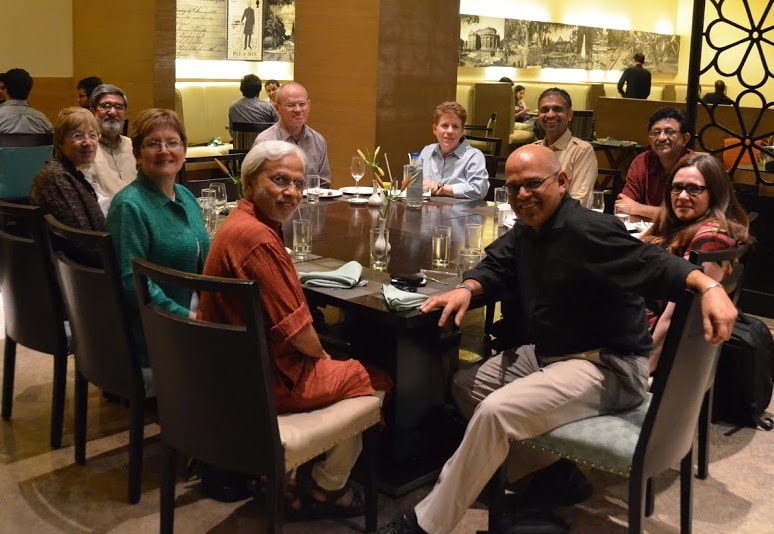Dinner in Bangalore with some of the key
members of the MSU-APU partnership *
One of the highlights of my career at MSU was the partnership we built between the College of Education and the Azim Premji University / Azim Premji Foundation. This partnership now nearing 6 years has transformed my life in many ways and has led to some powerful and deeply meaningful friendships. It has been a wonderful journey and, as in life, some of what happened was planned and some of it sort of just happened. So, it is no surprise that when we wrote a book chapter about this partnership we titled it By Design and by Chance: The Story of One International Partnership (reference, abstract and link below):
Berzina-Pitcher, I., Mishra, P., Giridhar, S. (2016). By Design and by Chance: The Story of One International Partnership. In P. Blessinger, & B. Cozza (Eds.) University Partnerships for Academic Programs and Professional Development. Bingley, UK: Emerald Group Publishing. p. 159-179. Permanent link to this document:http://dx.doi.org/10.1108/S2055-364120160000007019
Abstract: Emerging economies are becoming less reliant on funding from foreign agencies. One of the consequences of this is the formation of more self- funded international partnerships offering new models of inter-university partnerships. This chapter offers a perspective on such an on-going collaborative international partnership between two institutions of higher education one in the United States and the other in India. It describes the context in which the partnership was formed, the manner in which it evolved over time as both partners faced barriers, and challenges to the instantiation of the original vision. Sakamoto and Chapman’s (2010) Functional Model for the Analysis of Cross-border Partnerships is used to analyze and organize the key factors that have played roles in the development and success of the partnership. In addition, the chapter focuses on one component of the partnership activities, the short-term professional development visits to the United States for educators from Indian partner institution. Drawing on participants’ experiences from both sides of the partnership, this chapter presents the expectations, challenges, and opportunities this partnership has offered to members of both universities. The chapter ends with recommendations to establish or improve international collaborative university partnerships.




0 Comments